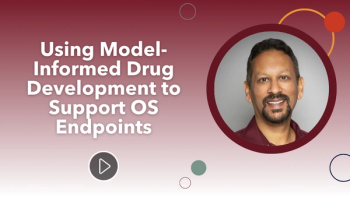
- Applied Clinical Trials-09-01-2011
- Volume 20
- Issue 9
Many Hands Molding Europe's New CT Rules
EU's new rules will be influenced by more than just those primarily responsible for pharmaceuticals.
September is back-to-school time in many places around the world—and certainly in Europe. So this month's column offers a quick reminder of where the European Union's engagement in clinical trials fits into the larger picture of the EU's broader health policy. Some sense of this context may be helpful in grasping how the debate evolves in the upcoming revision of Europe's clinical trials rules.
Peter O’Donnell
The context is important, because regulating clinical trials is only a very small part of the EU's involvement with health, and only one of the many pharmaceutical topics that the EU legislates. Its other preoccupations amount to a litany that runs through steering public health generally and fostering good health to improving healthcare and taking action against diseases, and from promoting health in society to refining risk assessments. Directly or indirectly, many of these other preoccupations influence the way that EU officials view medicines—and clinical trials.
A nodding acquaintance with these other activities in the health field—and of how their duties and dynamics mesh with the EU approach to clinical trials—is a precondition for comprehending EU regulators.
First, within the medicines area itself, the EU's interests extend across the entire legal framework for product authorization, with a focus that clinical trialists are familiar with specific areas such as pediatric medicines, orphan medicines, advanced therapies, and pharmacovigilance. Attention is equally devoted to medicines quality, the fight against counterfeiting, information to patients, and even traditional herbal medicines. The rules also embrace standards on the quality and safety of blood, tissues, and cells.
Many in the clinical trials community will also be familiar with the EU's involvement in the 20-year-old International Conference on Harmonization, that has led to enhanced cooperation with the United States and Japan on technical requirements for the development of medicines. Some may also know of its work in the International Conference on Harmonization Global Cooperation Group, which promotes wider understanding of regional harmonization initiatives, or of the EU's bilateral confidentiality agreements with the United States and Japan that deepen regulatory and scientific collaboration. But fewer will be aware of the emerging relations on medicines issues with India, Russia, and China, and probably fewer still with the EU's links with the Council of Europe, particularly on quality control of medicines, batch release, and standardization of biological products.
Closely linked to its work on medicines is an EU focus on what it entitles "taking action against diseases," which largely covers actions on communicable diseases and vaccination. Surveillance, rapid detection, and rapid response are central to much of this, in close collaboration with the recently-established European Center for Disease Prevention and Control. The EU is also coordinating member states' responses to major and chronic diseases, and stimulating progress in treatment of rare diseases.
Beyond the specific realm of medicines, the EU discharges its broader overall duty of steering public health through encouraging cooperation among its 27 member states on protection and prevention, and on promotion of healthy lifestyles. The strategy agreed for 2008-2013 highlights principles such as access to good quality care and reliance on evidence in policy making, and sets specific goals such as ensuring health is taken account of in all EU policies, and giving the EU a stronger voice in international discussions of health. It focuses on some issues such as population aging, new threats to health, and new technologies (based particularly on the conviction that "e-health, genomics, and biotechnologies can improve prevention of illness, delivery of treatment, and support a shift from hospital care to prevention and primary care").
Among the practical consequences of this approach, the EU is making available more than $50 million in 2011 to fund projects such as promoting health information and advice; fighting cancer and rare diseases; combating tobacco and alcohol dependency; and raising standards for blood and organ donation. In the multi-billion dollar EU program on research, health is one of the main financing priorities. Health also features prominently in regional policy, with more than €5 billion ($7.22 billion) allocated for health projects in 2007 to 2013. Support is provided to stimulate innovation and competitiveness through the wider uptake and best use of information and communications technology in health. A specific indicator has been created for measuring Healthy Life Years, as a key indicator for measuring progress in implementing the health strategy. Interest groups also receive support—with Alzheimer Europe and the European Public Health Alliance receiving significant funding last year. The European Social Fund also finances health activities linked to aging, e-health, health promotion, and training.
At the same time, extensive liaison takes place across many of the distinct components of the EU, in pursuit of the strategic goals. A "working party on public health at a senior level" brings officials and diplomats together to help ensure that health is fully taken into account in all EU policies—from taxation to social and regional policy, and from environment to education and research. Similarly, an inter-departmental group exists to improve coordination on health among more than 20 European Commission departments, assisted by thematic sub-groups on health systems, global health, or health and environment. There is also a plethora of specialized committees, including the HIV/AIDS think tank, the European partnership for action against cancer, the health security committee, the patient safety and quality of care working group, and working groups on health services and medical care. Meanwhile, an EU network for the epidemiology and control of communicable diseases focuses on surveillance and early warning and response coordination.
In recognition of the international dimensions of health, close contacts are maintained with non-EU countries and international organizations. Within its own neighborhood, the EU provides advice to countries that aspire to join it, and more widely it has set itself the long-term aim of promoting a global public health policy: EU ministers adopted a position last year that signalled commitment to universal coverage and the right to health. Health promotion also features prominently in the bilateral cooperation agreements that the EU has signed with many non-EU countries, and the EU cooperates with WHO on issues ranging from communicable diseases to tobacco control, and from environment and health to sustainable development. It works with the WHO's International Agency for Research on Cancer, and is also part of the European Observatory on Health Systems and Policies, which promotes evidence-based health policy-making. And it is an active member of the WHO International Medical Products Task Force, an international response to the growing public health threat from counterfeit medicines.
Within public health policy, the EU's objective of improving healthcare is realized in tangible form across a range of activities. One of the most prominent is in the developing area of cross-border care. New EU rules adopted this year aim to provide clear rules and reliable information to patients regarding access and reimbursement for healthcare received in another EU country, through a new network of national contact points and closer cooperation between EU countries in meeting patients' expectations of the highest quality healthcare. Although the new legislation clears up years of legal uncertainty, its detailed implementation over the coming months and years is going to demand significant engagement from national and EU officials.
Other activities undertaken in the framework of healthcare improvement include reducing the incidence of iatrogenic disease, combating resistance to anti-microbials, and enhancing the management of healthcare expenditure—which is being driven in part by a $6 million project to sharpen up the assessment of the merits of healthcare technology, including medicines and medical devices.
Ensuring health security is viewed as another key aspect of EU public health policy, through prevention, preparedness and response to the health threats that take no account of national frontiers—ranging from influenza pandemics and smallpox to chemical, biological, and radio-nuclear hazards. Internal coordination mechanisms include an EU health security committee, and at the international level the EU is constantly developing relations with its world partners, such as through the Global Health Security Initiative.
Health also receives attention as a social issue—looking for instance at social determinants and health inequalities, at the health challenges of environment or at screening and genetics, or at the health problems faced by particular population groups. It is against this background that the European Innovation Partnership on Active and Healthy Aging has this year been initiated—with senior-level pharmaceutical industry involvement, and with a target of increasing the average healthy lifespan in the EU by two years by 2020; it includes as one of its specific goals "enhancing the competitiveness of EU industry through business and expansion in new markets."
This is far from a complete catalogue of EU actions in the field of public health. The ambition of fostering good health is realized through activities that stretch across nutrition and physical activity, alcohol, tobacco, illicit drugs, mental health, and sexually transmitted diseases. Major efforts are devoted to developing health indicators and reports and to data collection, and the need for constantly refined risk assessment occupies a range of scientific committees in dialogue and collaboration on contentious subjects such as electromagnetic fields and nanotechnology.
But even this cut-down version of EU engagement should serve to demonstrate that when the review of the clinical trials directive gets underway, the new text will be influenced not only by the officials responsible for pharmaceuticals, but also by a wealth of other inputs from officials with a primary interest in tangentially-related issues such as aging, rare diseases, or international harmonization. Small wonder that many in the European clinical trials community worry that the regulatory racehorse that they are hoping to emerge from the new rules may turn out to be more of a camel with complexes.
Peter O'Donnell is a freelance journalist who specializes in European health affairs and is based in Brussels, Belgium.
Articles in this issue
about 14 years ago
Applied Clinical Trials Digital Edition - September 2011about 14 years ago
Most Protocols Require Multiple Amendmentsabout 14 years ago
Recruitment Rolesabout 14 years ago
Uniformity Sought for Research Standardsabout 14 years ago
EMA Commits to London for a Quarter Centuryabout 14 years ago
Cell Phone Key to REMOTE Data Collectionabout 14 years ago
Clusters' Last Stand?about 14 years ago
Lost to Follow-Up Survey Resultsabout 14 years ago
Business and News Update September 2011about 14 years ago
Pharma Companies Lose Facebook PrivilegesNewsletter
Stay current in clinical research with Applied Clinical Trials, providing expert insights, regulatory updates, and practical strategies for successful clinical trial design and execution.






.png)



.png)



.png)
.png)
